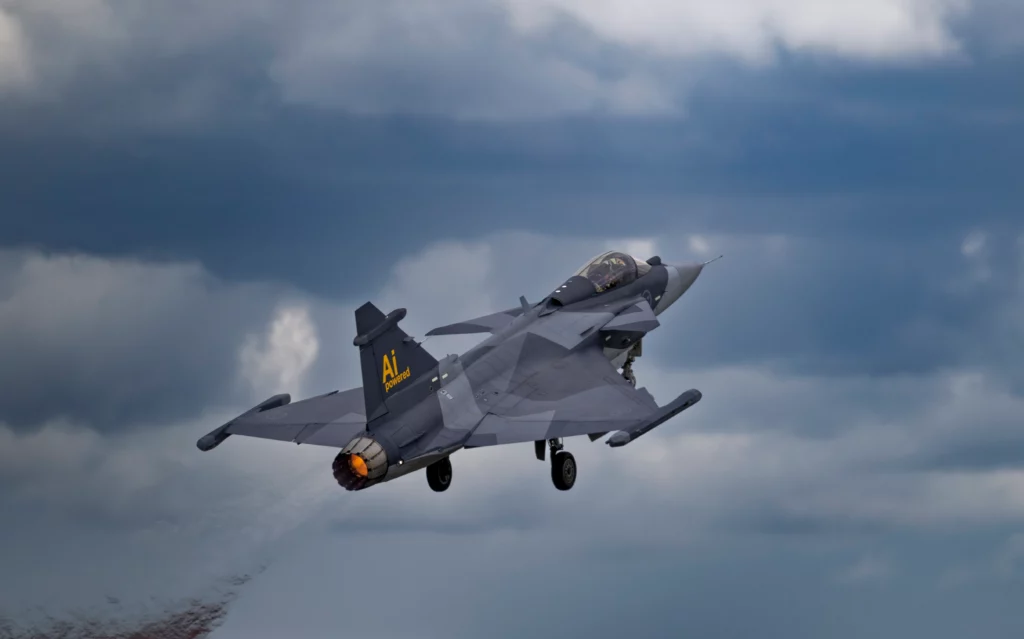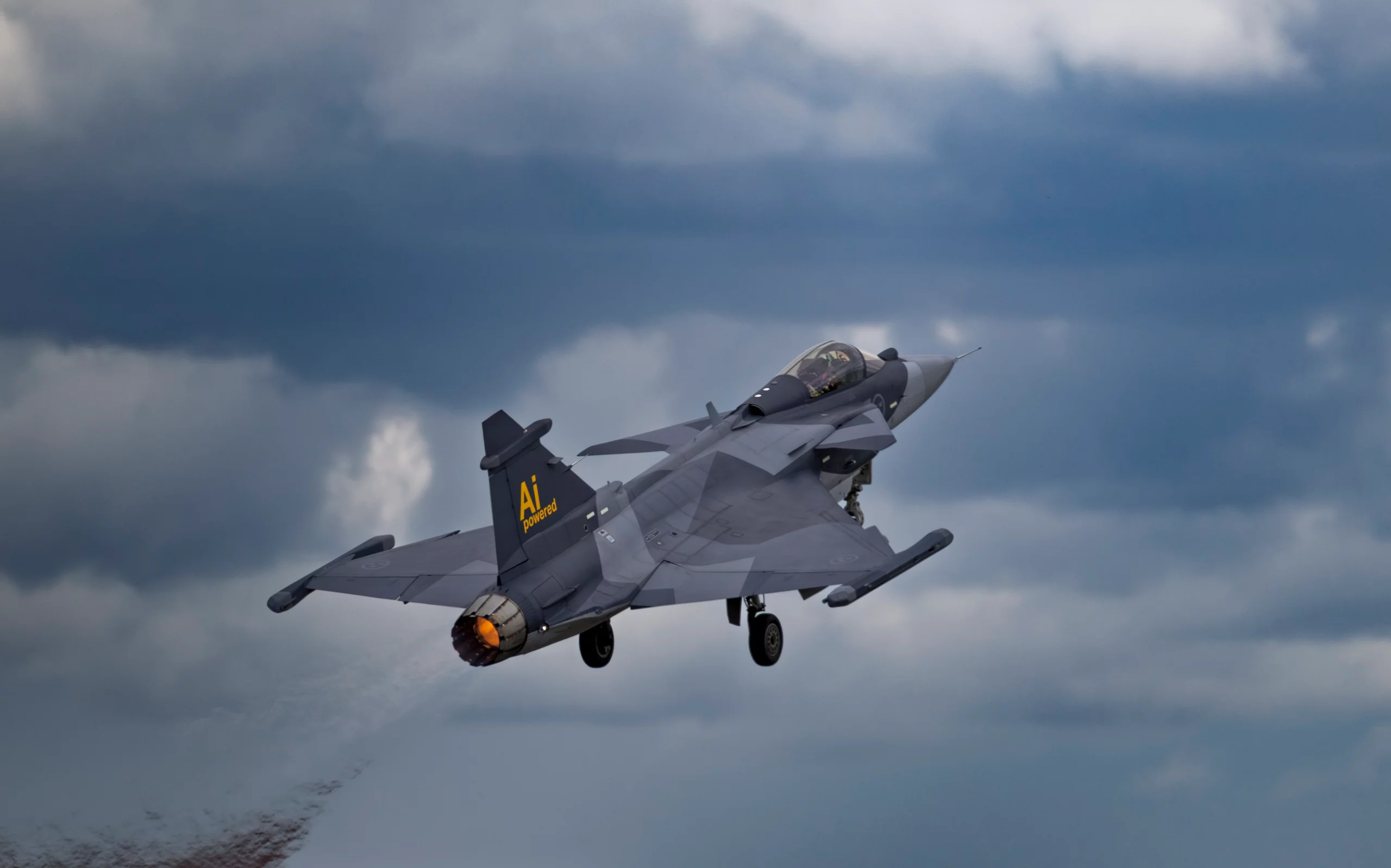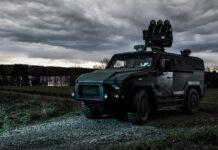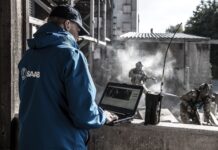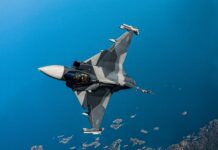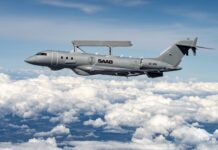Sweden’s Saab, collaborating with German defence technology company Helsing, announced on 11 June 2025 that it has successfully completed the first three flights with Helsing’s Centaur artificial intelligence (AI) agent integrated into a Gripen E fighter.
The flights, which were part of Saab’s ‘Project Beyond’, were conducted on 28 May 2025 and mark a significant advance in bringing AI capabilities to military aircraft. During the flights the Gripen E gave control to the Centaur AI agent, which successfully autonomously executed complex manoeuvres in a beyond-visual-range (BVR) combat scenario, cueing the pilot to fire on a manned Gripen D acting as an adversary.
A further series of flights will be made throughout the remainder of the year, perhaps involving two-versus one and two-versus-two engagements.
In an online pre-briefing to journalists on 10 June, Peter Nilsson, head of Advanced Programmes within Saab’s Aeronautics business area, stated, “That’s a quite big step for Saab. I would say it’s a quite big step for combat air worldwide – because, with the speed and the way we have developed it and integrated it, there’s no comparison in my mind.
Nilsson explained that the Saab and Helsing teams responsible for the Centaur integration first met in 2024 and asked “‘Can we do something together? Can we prove what we’re saying?’ … During the autumn [of 2024] we started thinking about the integration after Christmas, and the real work started in April. Eight weeks later we took off with a BVR agent in the Gripen E.”
Nilssen explained that the BVR scenario was initially chosen for the Gripen E/Centaur trials because it will play an important role in future air combat and is like ‘supersonic chess’. He added, however, that exploiting the AI will in future move on to other missions, such as air-to-ground sorties and suppression-of-enemy-air-defence and destruction-of-enemy-air-defence (SEAD/DEAD) missions.
The Gripen E’s design, which allows rapid software updates that are kept completely separate from the flight control system, means that the aircraft can fly with the Centaur AI software onboard and fully integrated without being restricted to solely military test ranges, with also no need for experimental X-planes to perform flight trials with the software.
Centaur is a state-of the-art AI agent that has been developed by Helsing since 2023. It is optimised for complex air combat missions for current and next-generation combat air platforms, both crewed and uncrewed (loyal wingmen/collaborative combat aircraft, for example). The inputs to Centaur include the mission plan, rules of engagement, sensor data and command-and-control tasks, from which Centaur’s outputs are aircraft control in terms of navigation and manoeuvring, target engagement and effect delivery (missiles in the case of the BVR engagement) and collaboration with other platforms via communications systems and datalinks.
Antoine Bordes, vice president for AI at Helsing, explained that, as Centaur trains against itself in a simulation environment, it can achieve decades of ‘man experience’ in a few hours. “We estimate that the AI agent that flew last week flew for around 50 years of the equivalent of pilot years. It took us only a few hours to do that,” he said, “and I think that’s maybe something that’s very, very important and remarkable.”
Johan Segertoft, head of Saab’s Gripen business unit, stressed that, while the speed at which Saab and Helsing integrated Centaur with the Gripen E is unprecedented, equally important is the fact that the AI agent was deployed in a live, standard Gripen E.
“This aircraft that you see is not a test aircraft, is not an experimental aircraft,” he said. “It’s a live aircraft with the latest version of the Gripen E software in it. And we could move on and we could deliver this to a customer, if we like, if they would like to continue to evaluate this capability with us.”
Segertoft also noted the ability of the Gripen E to fly with Centaur in civil airspace. “This is not a test range; this is not something in a desert; we are not deploying Helsing software in a stand-alone computer hidden away in the aircraft,” he noted. “We are deploying it in the heart of the avionics platform. It’s communicating with our flight control systems, with our sensors, with everything. We already knew this, but this is the proof point externally to what this aircraft can do.”
Segertoft added, “We are blurring the lines between now and the future. When everyone else is doing visions for 2035, 2040, 2045, we are talking about ‘What do we want to deploy now? How can we change everything now?’ We are the disruptor in military aviation, and we continue to be that.”
“Our whole goal with Gripen and our philosophy is always to deliver air power in practice all the time,” said Segertoft. “It’s not enough to be the most capable at day one. You need to be at day two, three, four and five, and software will always out compete the physical world. In software, there are no generations. There’s only speed.”
Marcus Wandt, Saab’s chief innovations officer, noted that Saab has been increasingly shifting towards more human-machine collaboration of the last 10 years, but is now increasingly moving toward more automation and more autonomy, both in its aircraft designs and in its other systems. He added that there are four strategic pillars driving how Saab embraces AI: mission advantage, smart operations, augmented design and engineering, and trusted adoption with regard to using AI ethically.
What AI essentially enables, he said, is “even more fast-moving decision making and fast-moving warfare” to deliver tactical and strategic advantage.
Saab’s and Helsing’s joint Project Beyond is fully sponsored by the Swedish Defence Material Administration (FMV) and is part of the Swedish concept programme looking at future fighter systems.
Asked by ESD whether the progress made by Project Beyond will make it more likely for the Swedish government to decide on a sovereign Swedish next-generation fighter programme to follow the Gripen E, Nilssen replied that Project Beyond “gives Sweden and it gives Saab the possibility to go really fast looking into these innovative capabilities, which are needed in the future. What Sweden will do? We don’t know yet. They [the Swedish FMV] have tasked Saab to look into new technology, be smarter, be faster, and then Sweden will take a decision later on, on what’s their future solution will be for a fighter system after the Gripen era.”
Nilssen added, “Of course, they want to see, in the demo concept programme, they want to see Saab’s innovation. They want us to see working with other companies that we can bring in because now [the use of AI is] going really fast outside defence, and we have to be able to work with companies, not the classic ones only, but to be able to bring in capabilities, technology from outside. So while the rest of our partners, competitors, are stuck setting up big, big programmes, we are moving in a speedy way, delivering capabilities here and now in the Gripen and looking what’s going to come after.”
